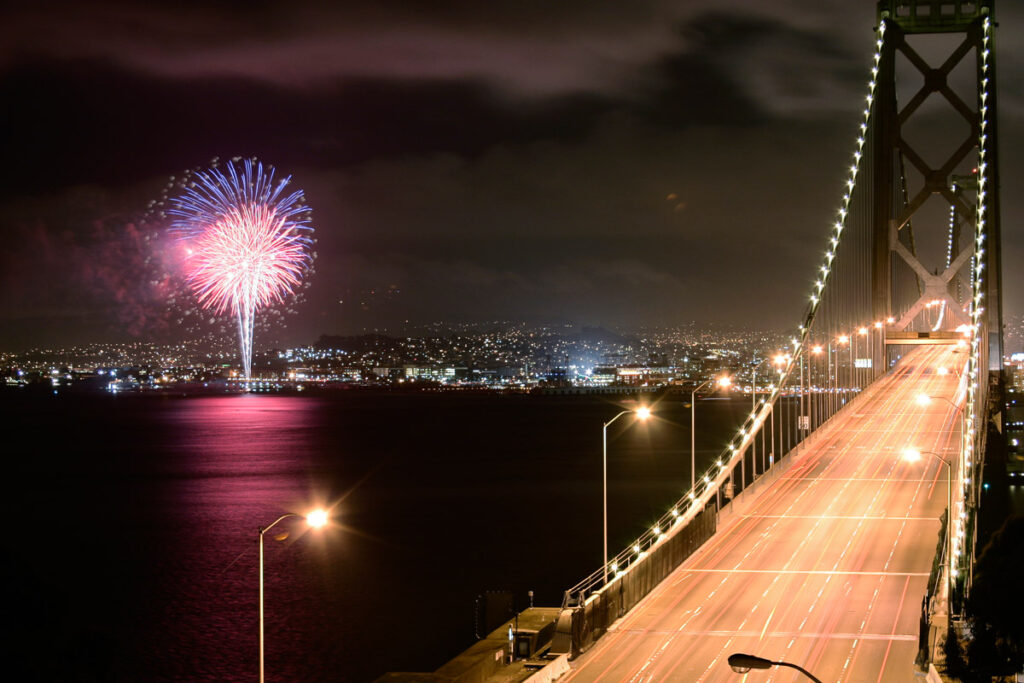
Photographing fireworks can be straightforward if you follow a few basic steps:
1) You need a camera where you can control the shutter speed. Digital SLR owners will be fine — use manual or Shutter Priority modes, but also more and more “point and shoot” cameras now offer this kind of control. Very slow shutter speeds work the best because they offer the biggest chance of the shutter being open when the fireworks explode.
2) No flash required! Turn off any automatic flash or select a mode where the flash won’t pop up.
3) Find a good spot for composition where you can set up a tripod or put the camera on a stable surface. This photo was taken with the camera sitting on a concrete parapet. Ideally, have something in the composition that you can use for focus lock and metering. In the photo, the focus point and metering was taken from the bridge.
4) Avoid camera shake from pushing the shutter release. If you have a remote release cable, use it. If not, make do by using the automatic timer (designed for self-portraits) — push the release and then step away from the camera so it is completely stable when the timer expires and the shutter opens.
5) Select the lowest ISO you have on your camera. You want a long exposure, and at night low ISO means the shutter has to be open at least a second or two to collect enough light from the scene. Because the shutter will be open for a long time, the camera will be susceptible to noise. This means light noise (unwanted light from street lights, headlight reflections etc) and thermal noise (heat in the sensor that causes a film grain effect). The fireworks will be relatively bright, and so although they are short in duration they will be visible in the photo. This photo was taken at ISO 100.
6) Unless you are shooting directly up into the sky with no background, meter the scene where you’ll take the photograph to set exposure. This goes back to composition — choose a spot where you have something else for focus and to take a light reading. You can set focus and exposure, then move the camera to the final position for the shot — this is what I did with the bridge in the photo. If in doubt, err on the side of over-exposure. With so little light in the scene it is unlikely to be catastrophic. Take a few test shots before the fireworks start to check exposure.
7) Once the firworks start, take lots and lots of photos! You never know what you will catch. Keep on clicking! If you have time, use image review to check shutter duration. If you see “streaky” fireworks, consider shortening the exposure (you can use Shutter Priority mode to ensure you get the same exposure at a faster shutter speed), or dial up the ISO.

